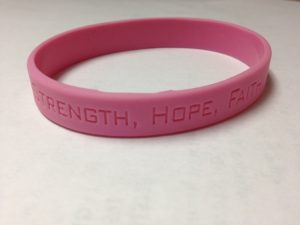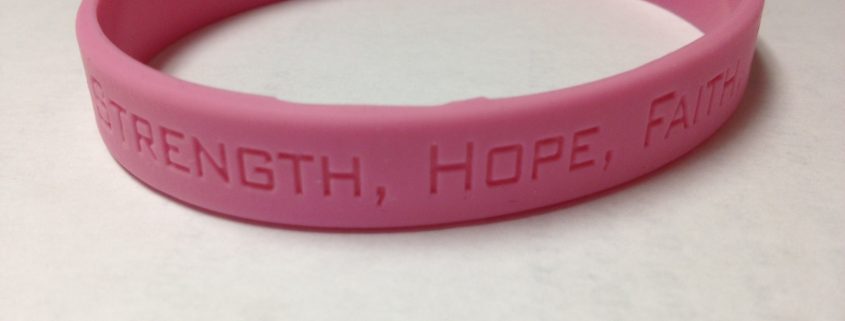Reducing Your Risk During Breast Cancer Awareness Month
 As I’m sure you know, October is Breast Cancer Awareness Month. But, did you know that 1 in 8 women in the United States will develop breast cancer in their lifetime? This is why Breast Cancer Awareness Month is so important to participate in. Although some risk factors you cannot change like being female and genetics, there are some steps you can take to reduce your risk and that’s what I’ll touch upon in this blog.
As I’m sure you know, October is Breast Cancer Awareness Month. But, did you know that 1 in 8 women in the United States will develop breast cancer in their lifetime? This is why Breast Cancer Awareness Month is so important to participate in. Although some risk factors you cannot change like being female and genetics, there are some steps you can take to reduce your risk and that’s what I’ll touch upon in this blog.
Psst, men… Although not as common, did you know that you can also develop breast cancer? In fact, 1 in 1,000 men will develop breast cancer in their lifetime. Thus, this blog isn’t just meant to help women reduce their risk, it can help you reduce yours as well!
8 Ways to Reduce Your Risk
- Quit Smoking.Smoking is a huge risk factor for breast cancer, as well as lung cancer. Speak with your doctor to discuss ways you can quit today.
- Cut down on alcohol use.Although 1 drink/day for women has been linked to better heart health, it can actually increase your risk of developing breast cancer. This risk increases as more alcohol is consumed. The American Cancer Society recommends that women drink no more than 1 alcoholic drink/day.
- Maintain a healthy weight.Obesity, particularly after menopause, can greatly increase your risk of breast cancer. It’s best to aim for gradual weight loss by choosing minimally processed foods and eating smaller portions.
- Regular exercise.In one study from the Women’s Health Initiative, as little as 1 ¼ to 2 ½ hours per week of brisk walking reduces your risk by 18% and 10 hours of brisk walking a week reduces your risk even more! Aim for 150 minutes of moderate exercise weekly.
- Increase your intake of fiber. Dietary fiber helps your digestive system by assisting in regularity as well as promoting the growth of good bacteria while riding the body of toxins. Fiber can be found in fruits, vegetables and whole grains!
- Add more cruciferous vegetables to your meals. Broccoli, cauliflower, Brussel sprouts, kale and cabbage are considered cruciferous vegetables and they contain indole compounds. Indole compounds have been linked to lower rates of cancer and may even prevent tumor growth.
- Choose foods that are orange-red in color. Carotenoids are a phytochemical found in orange-red fruits and vegetables like carrots, cantaloupes and butternut squash, and has been linked to lower rates of cancer.
- Eat more foods rich in omega-3 fatty acids. This specific fatty acid has anti-inflammatory properties that may reduce your risk of cancer and tumor growth as well. Mackerel, salmon, cod and walnuts are all considered good sources of this fatty acid.
Regular Check-Ups and Self Exams
Eating a well-balanced meal alone cannot prevent the development of the disease, that is why it is essential that you also practice self-care and go to your regular check-ups. It is recommended that women over 45 years of age get a yearly mammogram, or 40 years of age if your family has a history of breast cancer.
In between check-ups, it’s important to conduct self-exams! Here’s what to look for during your monthly exams:
- Change in the size of one or both breasts.
- Change in the shape of one or both breasts; flattening or marble-like area.
- Discoloration of breast tissue or change in skin texture.
- Clear or bloody discharge from the nipple.
- Tenderness of the breast and/or nipple.
- Chafing, or flaking of the breast skin.
- Presence of a breast lump.
- Pain or tingling sensation within the breast.
If you have any of the symptoms above, it does not necessarily mean that you have cancer! However, it is important to inform your doctor of any changes in your breasts. Early detection is important for treatment and survival!
It’s time to take charge of your health and reduce your risk of breast cancer. Use this month as your starting point and continue with it all year long!
Your Turn To Take Action:What steps will you take to decrease your risk for breast cancer and spread awareness? Let me know in the comments below!


Leave a Reply
Want to join the discussion?Feel free to contribute!